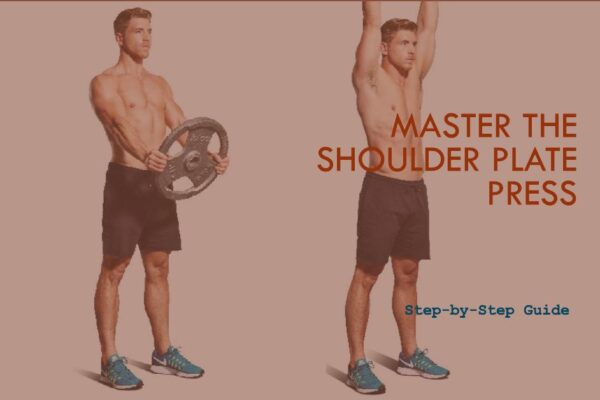When it comes to building strong arms, dips are a fantastic choice. But here’s the twist: there are two main ways to do them—close grip and wide grip. Let’s break it down in simple terms.
Close grip dips mean your hands are closer together, while wide grip dips have your hands spaced farther apart. Each way works your muscles a bit differently, and it’s important to know which one suits your goals.
In this guide, we’ll explain the benefits of close grip and wide grip dips, helping you figure out which style is right for you. Whether you want toned triceps, a strong chest, or just a good overall workout, understanding the differences between these two dip variations will make your fitness journey easier. Let’s discuss in detail Close Grip vs Wide Grip Dips and find the perfect fit for your arm-strengthening routine!

Difference Between Close Grip vs Wide Grip Dips
The key differences between Close grip vs Wide Grip dips are listed below.
| Aspect | Close Grip Dips | Wide Grip Dips |
|---|---|---|
| Muscle Emphasis | Primarily targets the triceps and shoulders. | Emphasizes the chest and outer chest muscles. |
| Grip Width | Hands placed closer than shoulder-width apart. | Hands placed wider than shoulder-width apart. |
| Elbow Position | Elbows remain close to the torso. | Elbows tend to flare outwards during the descent. |
| Range of Motion | Offers a greater range of motion for the triceps. | Reduces the range of motion, focusing on chest. |
| Body Position | Upright posture with minimal forward lean. | Allows for a more forward lean in the torso. |
| Muscle Activation | Engages the triceps, deltoids, and stabilizers. | Activates the pectoral muscles and deltoids. |
The comparison table provides a detailed breakdown of the key aspects distinguishing between close grip and wide grip dips, offering insights into how each variation targets specific muscle groups and affects body positioning during the exercise.
Close Grip Dips
Close grip dips are a fantastic exercise for targeting the triceps and shoulders. When performing close grip dips, your hands are placed closer than shoulder-width apart, allowing for a greater emphasis on the triceps. This variation offers a wider range of motion, engaging the triceps and deltoid muscles effectively.
Additionally, maintaining an upright posture with minimal forward lean during close grip dips helps isolate and activate the targeted muscle groups. It’s important to note that the elbow position remains close to the torso throughout the movement, leading to focused activation of the triceps.
How To Do It:
To perform the concentration curls with proper form, follow these steps:
A. Setup and Equipment Needed
- Access to a secure bench or parallel bars
- Ensure stable equipment capable of supporting body weight
B. Initial Position
- Place hands close together behind buttocks, fingers facing forward
- Thumbs ideally touching each other
C. Execution of the Exercise
- Lower your body by bending your elbows while keeping them close to your torso.
- Descend until your upper arms are parallel to the ground or reach a comfortable depth, feeling a stretch in your triceps.
- Push yourself back up to the starting position by straightening your arms, focusing on engaging the triceps to propel your body upward.
D. Breathing Tips
- Inhale as you lower your body during the dip, maintaining steady and controlled breathing.
- Exhale as you push yourself back up to the starting position, exerting force through the triceps.
Muscle Targeted:
- The primary muscles targeted by close grip dips are the triceps and deltoids.
- Close grip dips effectively engage the lateral and long heads of the triceps due to the close hand positioning.
- The anterior deltoids are also actively involved in stabilizing and supporting the movement during close grip dips.
Benefits of Close Grip Dips
Close grip dips offer a range of benefits, making them a valuable addition to your fitness routine:
- Targeted Triceps Engagement: The close hand positioning places greater emphasis on the triceps, helping to isolate and strengthen this muscle group effectively.
- Enhanced Triceps Definition: By focusing on the triceps, close grip dips can contribute to improved muscle definition in the back of your arms.
- Reduced Chest Involvement: Compared to wide grip dips, the close grip variation minimizes the engagement of the chest muscles. This makes it an excellent choice for individuals specifically looking to isolate and work on their triceps.
- Joint-Friendly Option: The close grip puts less stress on the shoulder joints, making it a potentially safer option for those with shoulder concerns or discomfort.
- Increased Elbow Flexor Activation: Close grip dips engage the muscles around the elbow joint more intensely, contributing to overall arm strength and stability.
- Versatility in Training: Incorporating close grip dips allows for a well-rounded arm workout, complementing other exercises targeting different muscle groups.
Remember to incorporate close grip dips into your fitness routine with proper form and gradual progression to maximize the benefits while minimizing the risk of injury.
Common Mistakes to Avoid:
When performing close grip dips, it’s important to avoid common mistakes to ensure safety and effectiveness. Some common mistakes to avoid include:
- Allowing the elbows to flare out excessively, which can place unnecessary strain on the shoulder joints.
- Descending too quickly during the dip, can increase the risk of shoulder injury and reduce the effectiveness of the exercise.
- Failing to maintain proper body alignment, leads to excessive forward lean or arching of the back, which can compromise form and increase the risk of injury.
- Using momentum to complete the movement, rather than relying on controlled muscle engagement, diminishes the exercise’s effectiveness.
By being mindful of these common mistakes and focusing on proper form, individuals can maximize the benefits of close grip dips while minimizing the risk of injury.
Tips to Maximize the Results:
To maximize the results when performing close grip dips, consider the following tips:
- Focus on Mind-Muscle Connection: Concentrate on engaging the triceps and deltoids throughout the entire range of motion, ensuring maximum muscle activation for optimal results.
- Control the Movement: Emphasize controlled, deliberate movements during both the descent and ascent phases of the dip to fully engage the targeted muscles and minimize the risk of injury.
- Experiment with Resistance: Gradually increase the resistance by using a weight belt or incorporating resistance bands to progressively challenge the muscles and promote strength gains.
- Ensure Proper Form: Maintain proper body alignment, keeping the elbows close to the body and avoiding excessive forward lean, to effectively target the triceps and deltoids while reducing the risk of strain or injury.
- Incorporate Variations: Explore different variations of close grip dips, such as tempo variations, to add diversity to the workout and stimulate muscle growth from various angles.
By implementing these tips, individuals can enhance the effectiveness of their close grip dip workouts and optimize their results.
Wide Grip Dips
Wide grip dips are a variation of the traditional dip exercise where the hands are placed on parallel bars with a grip that is wider than shoulder-width. This variation primarily targets the chest, shoulders, and triceps, providing a different emphasis compared to close grip dips.
When performing wide grip dips, individuals typically experience increased activation of the chest muscles due to the wider hand placement. This variation places additional emphasis on the chest and shoulders while still engaging the triceps. The wider grip can also lead to more recruitment of the pectoral muscles, making it an effective exercise for overall upper body development.
It’s important to note that proper form and controlled movement are crucial when performing wide grip dips to minimize the risk of injury and maximize the engagement of the targeted muscle groups.

How To Do A Wide Grip Dips
A. Set up and Equipment Needed:
- To perform wide grip dips, you will need access to parallel bars or dip bars.
- Ensure that the bars are stable and can support your body weight.
B. Initial Position:
- Stand between the parallel bars and grip them with your hands placed slightly wider than shoulder-width apart.
- Lift yourself so that your arms are fully extended, supporting your body weight.
C. Execution of the Exercise:
- Lower your body by bending your elbows, allowing them to flare out to the sides.
- Lower yourself until your shoulders are below your elbows or until you feel a full stretch in your chest and shoulders.
- Push yourself back up to the starting position by straightening your arms, focusing on engaging the chest and triceps.
D. Breathing Tips:
- Inhale as you lower your body down.
- Exhale as you push yourself back up to the starting position.
Muscles Targeted by Wide Grip Dips
- Chest muscles, particularly the pectoralis major
- Anterior deltoids (front shoulder muscles)
- Triceps brachii (triceps muscles)
- Serratus anterior (muscles located on the sides of the chest and ribcage)
- The clavicular (upper) head of the pectoralis major
Tips to Maximize the Results
Here are some tips to maximize the results when performing wide grip dips:
- Grip Width: Use a grip that is no wider than shoulder-width for optimal engagement of the targeted muscles and to minimize unnecessary stress on the shoulders and elbows. This advice is supported by Jim Stoppani’s training recommendations.
- Proper Form: Maintain proper form throughout the exercise, ensuring controlled movement and a full range of motion to effectively target the chest, shoulders, and triceps.
- Muscle Targeting: To emphasize the chest muscles, consider leaning forward slightly during the dip movement. This adjustment can help intensify the activation of the chest muscles, as suggested by Vahva Fitness.
- Stability and Coordination: Wide grip dips can contribute to overall stability and coordination, in addition to strengthening and toning the chest muscles.
- Hand Placement: Ideally, position your hands roughly at shoulder-width distance to optimize the engagement of the targeted muscle groups, as recommended by breakingmuscle.com.
- Progressive Training: Experiment with different degrees of lean and leg positioning to determine the most effective variation for targeting the upper body muscles.
These tips can help individuals maximize the effectiveness of wide grip dips while minimizing the risk of injury and promoting muscle growth and strength.
Benefits of Wide Grip Dips
Wide grip dips offer a variety of benefits that cater to different aspects of your upper body strength and development. Here are some advantages of incorporating wide grip dips into your workout routine:
- Chest Emphasis: Wide grip dips place a greater demand on the chest muscles, helping to develop and define the pectoral region.
- Shoulder Engagement: The wide hand positioning activates the shoulder muscles, contributing to overall shoulder strength and stability.
- Increased Range of Motion: With a wider grip, you can achieve a deeper dip, promoting a fuller range of motion. This can enhance flexibility and mobility in the shoulder joints.
- Targeting Different Muscle Fibers: Wide grip dips work different muscle fibers in the triceps, providing a comprehensive approach to arm development compared to close grip dips.
- Enhanced Calorie Burn: The increased muscle engagement in wide grip dips can contribute to a higher calorie burn during your workout, potentially aiding in fat loss when combined with a balanced diet.
- Versatility in Training: By incorporating wide grip dips, you add variety to your workout routine, targeting multiple upper body muscle groups for a more comprehensive strength-building session.
- Challenging the Core: The wider hand placement requires additional core stability, providing an opportunity to engage and strengthen your core muscles during the exercise.
Remember to perform wide grip dips with proper form and gradually increase intensity to reap the full benefits while minimizing the risk of injury.
Common Mistakes to Avoid
Here are some common mistakes to avoid when performing wide grip dips:
- Excessive Forward Lean: Leaning too far forward during the dip can place excessive stress on the shoulders and compromise proper muscle engagement. Maintaining an upright posture is crucial for targeting the intended muscle groups.
- Incomplete Range of Motion: Failing to lower the body to a point where the shoulders are below the elbows can limit the effectiveness of the exercise. Ensure a full range of motion for optimal muscle activation.
- Over-Gripping: Gripping the bars too tightly can lead to unnecessary tension in the arms and shoulders, potentially impeding the fluidity of the dip movement. Maintain a firm but relaxed grip to support the body weight effectively.
- Shoulder Shrugging: Allowing the shoulders to rise up toward the ears during the dip can detract from the engagement of the chest and triceps. Focus on keeping the shoulders down and back throughout the movement.
- Lack of Control: Performing dips in a hurried or uncontrolled manner can increase the risk of injury and limit the muscle-strengthening benefits. Emphasize controlled movements with deliberate form.
- Inadequate Warm-up: Failing to properly warm up the shoulders, chest, and triceps before performing wide grip dips can increase the risk of strain or injury. Prioritize a thorough warm-up routine to prepare the muscles for the exercise.
Avoiding these mistakes will contribute to safer and more effective wide grip dips, promoting proper muscle engagement and minimizing the risk of injury.
Frequently Asked Questions
| Question | Answer |
|---|---|
| Is a wide grip or close grip better for dips? | The wide grip targets the chest more, while the close grip emphasizes the triceps. Personal preference and individual goals should also be considered when choosing between the two grips for dips. |
| Which grip is better for dips? | The optimal grip for dips depends on the specific muscle-targeting goals. A wide grip focuses more on the chest, while a close grip places greater emphasis on the triceps. |
| What do close grip dips do? | Close grip dips primarily target the triceps and also engage the chest and shoulder muscles to a lesser extent. |
| Are wide or close dips better for the triceps? | Close grip dips are more effective for targeting the triceps due to the narrower hand placement, which increases triceps activation during the exercise. |
| Is close grip harder than wide? | Close grip dips are generally considered more challenging due to the increased emphasis on the triceps, compared to wide grip dips which target the chest. |
| Are wide dips safe? | Wide dips can be safe when performed with proper form and controlled movement. It’s important to avoid excessive forward lean and prioritize maintaining an upright posture. |
| Is a wide grip better for the chest? | The wide grip is particularly effective for targeting the chest muscles during dips, especially when combined with a slight forward lean to intensify chest engagement. |
| Does a close grip hit a long head? | Close grip dips primarily target the lateral and medial heads of the triceps, with less emphasis on the long head compared to other triceps exercises. |
| Is close grip better? | Close grip dips are beneficial for targeting the triceps, providing a challenging exercise for triceps strength and development. |
Final Thoughts
Close grip dips primarily target the triceps and are considered more challenging due to the increased emphasis on triceps activation. Wide grip dips, on the other hand, are effective for targeting the chest muscles, especially when combined with a slight forward lean to intensify chest engagement. The optimal grip choice depends on individual muscle-targeting goals and personal preferences.






Leave a Reply